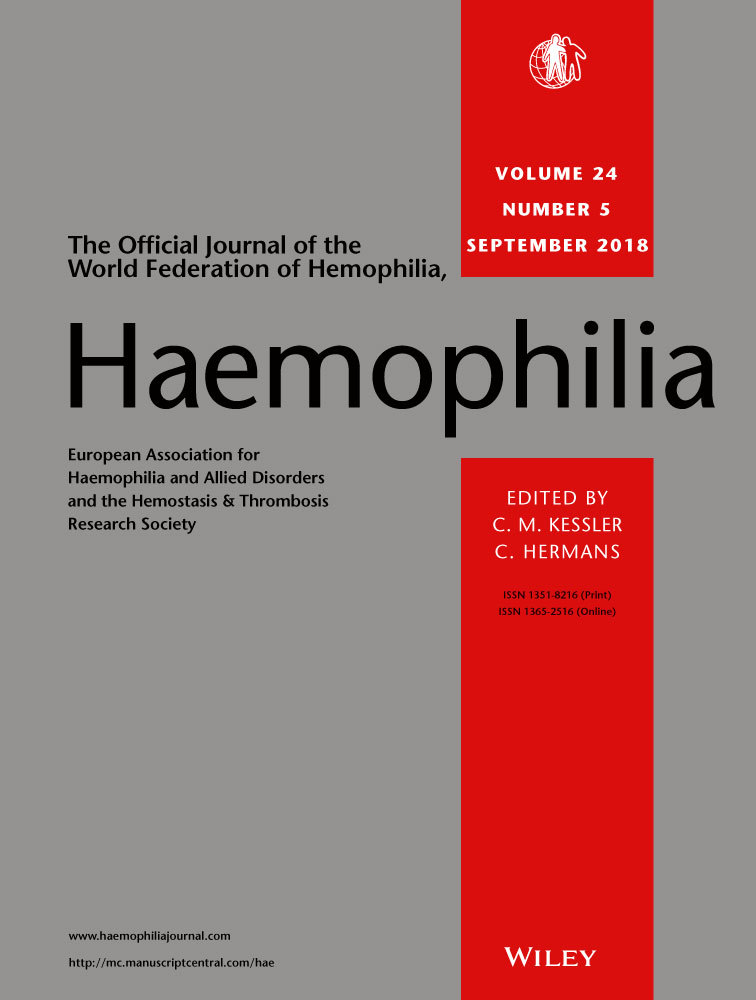Clinical outcomes and patient satisfaction following total hip and knee arthroplasty in patients with inherited bleeding disorders: A 20-year single-surgeon cohort
Abstract
Introduction
Persons with haemophilia and other inherited bleeding disorders are prone to disabling joint arthropathy frequently requiring arthroplasty for end-stage joint disease. Higher complication rates and more modest post-operative functional outcomes have previously been described.
Aim
To evaluate the clinical outcomes and patient satisfaction of persons with inherited bleeding disorders (predominantly haemophilia) undergoing total hip and knee replacement.
Methods
Retrospective, single-centre cohort study with longitudinal assessment of patients with inherited bleeding disorders who underwent total hip and knee replacement over a 20-year period. Eligible patients were clinically assessed with Harris Hip Score (HHS), Knee Society Score (KSS), pain visual analogue scale (VAS) and a patient satisfaction questionnaire.
Results
Thirty-one patients (48 joints) met the inclusion criteria. Mean age at surgery was 49.3 years (SD: 13.1, range 21-75 years) with a mean follow-up of 9.33 years (1.7-19.3). The majority (26/31) of patients had haemophilia A, predominantly severe haemophilia A (22/26). Reported pain levels were low, and patient satisfaction was high. Joint-specific outcome scores were “good” to “excellent” in 67% of total hip replacement patients and 92% of total knee replacement patients. A low complication rate was observed, with 2 patients requiring revision surgery and 4 patients requiring re-operation without implant revision.
Conclusion
Arthroplasty is a reliable procedure in patients with inherited bleeding disorders with end-stage hip or knee arthropathy. The overall complexity of this group is highlighted, and the need for multidisciplinary care is emphasised.




